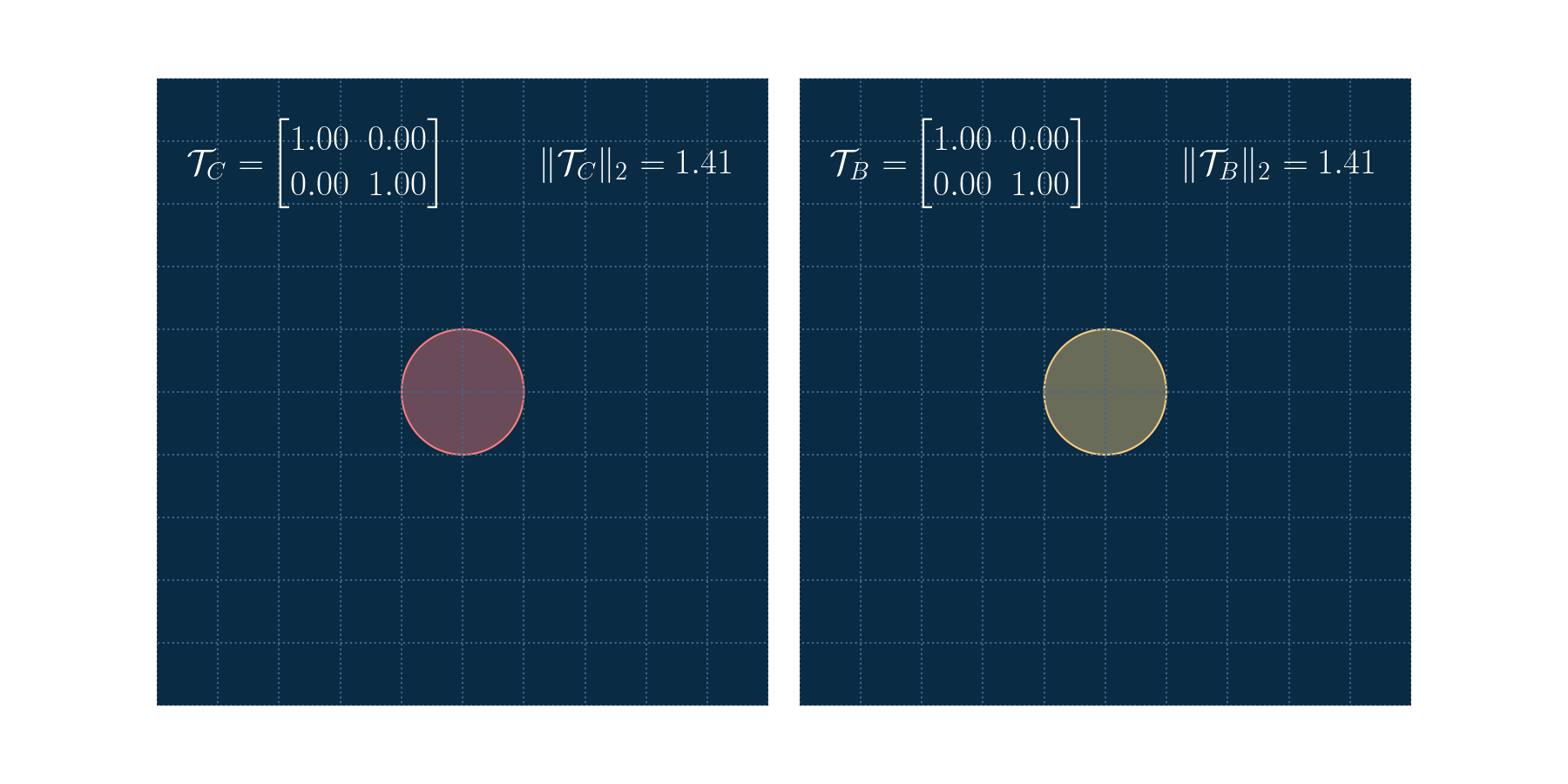Introduction
Even though tensor algebra does not belong to linear algebra I decided to incorporate this topic in here since it can be also viewed as an extension of the knowledge required in linear algebra. Concepts like inner product, vectors, matrices and metrics are further generalized in tensor algebra.

Change of basis and coordinate transformation
To understand some properties of covariant and contravariant vectors let us start with the basis transformation matrix and its corresponding coordinate transformation matrix. These two operators exhibit a somehow reversed behaviour. When we though analyse how they are constructed it becomes obvious:
Let \(\mathcal V (\mathbb{K})\) be a vectorspace over a fied \(\mathbb{K}\) and let \(\mathcal B_{1} = \{b_{1}, ..., b_{n} \}\)
and \(\mathcal B_{2} = \{\hat{b_{1}}, ..., \hat{b_{n}} \}\) be two basis.
\(\forall \ v \in \mathcal V\) with \(v = \sum_{i=1}^{\\n} b_{i} \mu_{i} = \sum_{i=1}^{\\n} \hat{b}_{i} \lambda_{i}\)
we have \(\mathcal T_{B} = (\mathcal T_{C}^{-1})^\top\) where:
From the chapter, Matrix Representation, we know that the coordinate transformation from basis $\mathcal{B}_1$ to basis $\mathcal{B}_2$ has the following form:
$$ \Phi_{\mathcal{B}_2} = [\mathcal{I}d_{\mathcal{V}}]_{\mathcal{B}_1, \mathcal{B}_2} \ \circ \ \Phi_{\mathcal{B}_1} $$
$$
(\mathcal{T}_{C}^{-1})^\top = (([\mathcal{I}d_{\mathcal{V}}]_{\mathcal{B}_1, \mathcal{B}_2} \ \circ \ \Phi_{\mathcal{B}_1})^{-1})^\top =
( \Phi_{\mathcal{B}_1}^{-1} \ \circ \ [\mathcal{I}d_{\mathcal{V}}]_{\mathcal{B}_1, \mathcal{B}_2}^{-1})^\top =
( \Phi_{\mathcal{B}_1}^{-1} \ \circ \ [\mathcal{I}d_{\mathcal{V}}]_{\mathcal{B}_2, \mathcal{B}_1})^\top
$$
Now we need to ... (dual map)


Vectorfields

Covariant Vectors
Due to the duality …

Contravariant Vectors

Transformation of a Gradient

